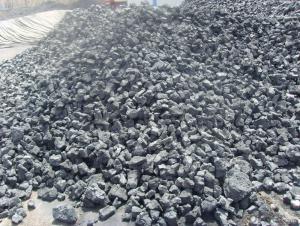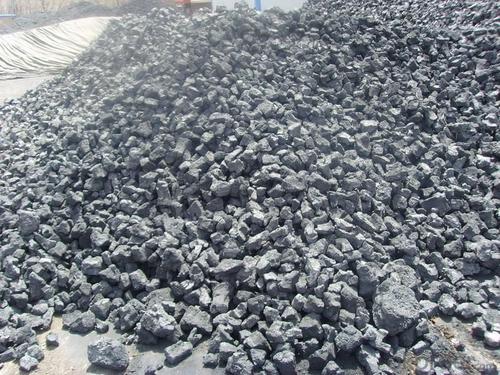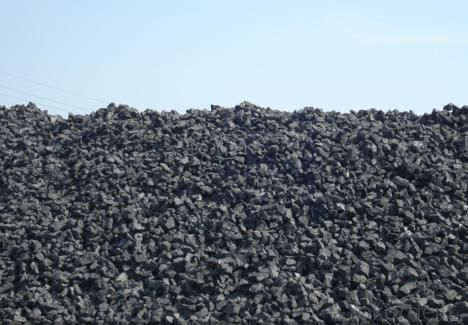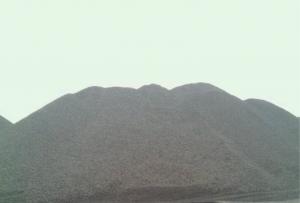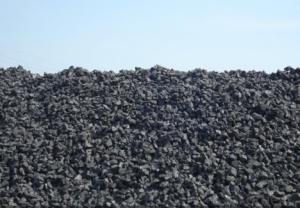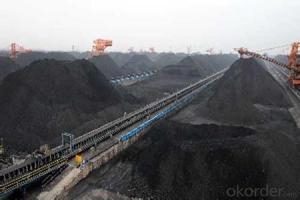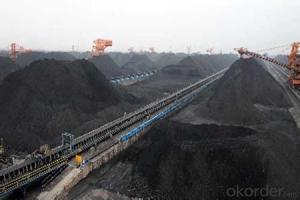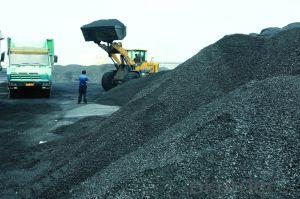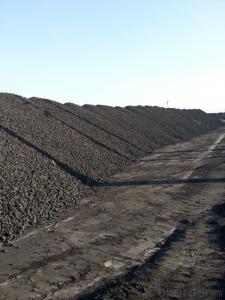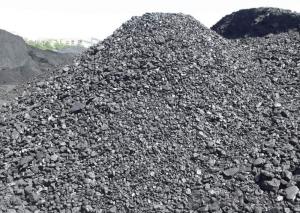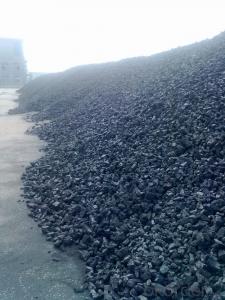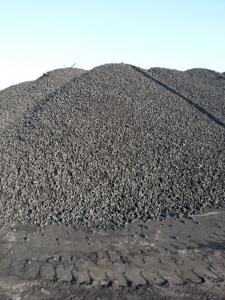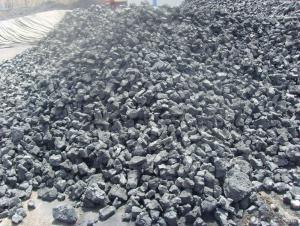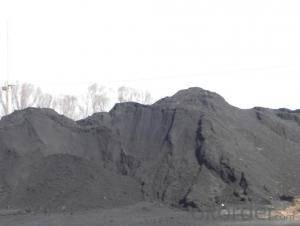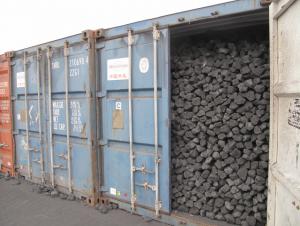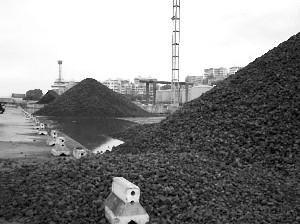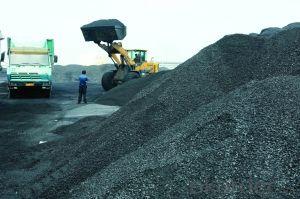The Metallurgical Coke of Coke Strength after Reactivity 60
- Loading Port:
- Tianjin
- Payment Terms:
- TT OR LC
- Min Order Qty:
- 100 m.t.
- Supply Capability:
- 3000 m.t./month
OKorder Service Pledge
OKorder Financial Service
You Might Also Like
1. Structure of Metallurgical Coke of Coke Strength after Reactivity 60 Description:
Coke is made by high temperature metallurgical coke for blast furnace smelting, casting and gasification. Occurring in the process of coking after recovery and purification of coke oven gas is a high calorific value of fuel, is an important industrial raw material in organic synthesis.
Coke is mainly used for blast furnace ironmaking and used for copper, lead, zinc, titanium, antimony, mercury and other non-ferrous metal smelting of blast furnace, reducing agent, compound and the function of stock column frame.
Blast furnace with Coke instead of charcoal, which laid a foundation for the large-scale of modern blast furnace, is a major milestone in the history of metallurgy.
2. Main Features of the Metallurgical Coke of Coke Strength after Reactivity 60:
• Quality assurance
• Mutual benefit
• Preferential price
• Various choice
3. Metallurgical Coke of Coke Strength after Reactivity 60 Images:



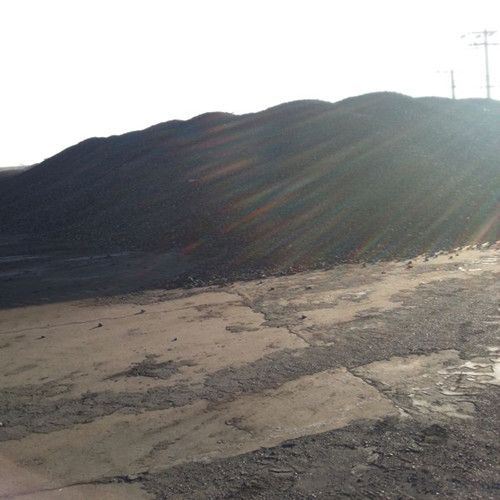
4. Metallurgical Coke of Coke Strength after Reactivity 60 Specification:
Parameters | Guarantee |
Moisture (ARB) | 5% max |
Ash (DB) | 12.50% max |
Volatile Matter (DB) | 1.4% max |
Sulphur (DB) | 0.7% max |
Phosphorus (DB) | 0.035% max |
CSR | 60% min |
CRI | 28% max |
M40 | 82% min |
M10 | 8% max |
Size 30-90 mm | 90% min |
+90 mm | 5% max |
-30mm | 5% max |
Mean Size | 52 mm |
5. FAQ
We have organized several common questions for our clients,may help you sincerely:
1) How to guarantee the quality of the products?
We have established the international advanced quality management system,every link from raw material to final product we have strict quality test;We resolutely put an end to unqualified products flowing into the market. At the same time, we will provide necessary follow-up service assurance.
2) What are coke's main physical properties?
The average heat capacity is 0.808 kj/(KGK) (100 ℃), 1.465 kj/(KGK) (1000 ℃)
Thermal conductivity is 2.64 kj/(MHK) (room temperature), 6.91 kj/(MHK) (900 ℃);
Ignition temperature (air) is 450-650 ℃.
3) How about your company?
Our company began to export coke when China cancelled 40% of coke export tariffs and quotas on January 1, 2013. We export many kinds of coke, such as CSR60 % and CSR 62% metallurgical coke (met coke), the NUT coke of 20 to 50 mm, coke breeze of 3 to 6 mm, and so on.
- Q: Coke can be used to do what carbon black can be used to do?
- 2 carbon black is produced by compounds of carbon and carbon, the main hydrocarbon combustion, the combustion is not sufficient, can not be converted into carbon dioxide, is carbon monoxide, so as small particles of carbon particles, which is carbon black; carbon black can be used as filling agent of rubber mixture, preferably for tires.
- Q: Various types of coal coke are the main test items
- The basic instrument of coal laboratory of these conventional indicators required are: calorimetry, sulfur detection apparatus, muffle furnace (Gao Wenlu), or when the microcomputer controller temperature controller, drying oven (oven), instrument, glial layer measuring instrument, the ash melting point determination of caking index, in addition to auxiliary equipment: crusher, pulverizer, electronic balance, vibration sieve machine, two points etc.. The above is the coal test indicators by Hebi Huanuo coal testing equipment factory to provide, I hope to help you.
- Q: Effect of coal fineness on coke
- From the point of view of the uniformity of coal material, the more finely pulverized coal. But if the coal fineness is small, because of the presence of a larger particle weakly caking coal and ash and coke cracks increased, the uniformity of deterioration. If the particle size of coal is not uniform, it is easy to produce segregation phenomenon in the transportation process, the grain size of different size will be gradually stratified by size. Due to the different coal hardness of the coal blending, large particles of coal is often a greater hardness of coal, so the segregation phenomenon, will make the different coal species gradually separated, so that the uniformity of coal deterioration.
- Q: Coke indicators are divided into grades
- The index of pore structure is mainly expressed by the porosity rate (the percentage of the total volume of coke), which affects the reactivity and strength of coke. Different uses of different coke porosity index requirements, the general requirements of metallurgical coke porosity in the 40 ~ 45%, 35 ~ 40% in coke, coke export demand in about 30%. Coke crack degree and the porosity level, and the coking coal has a direct relationship, such as coal based coke refining, crack, high porosity, low strength; with coal as the foundation of the coal refining coke crack less, low porosity and high strength
- Q: Why does Coke provide heat when it is fired, it reacts only at high temperatures and why it is needed to provide heat?Which is the exothermic reaction, carbon dioxide or carbon monoxide?
- In addition to the reaction of iron and iron oxide will react C+O2=CO2; reaction exothermic;
- Q: Who knows the proportion of pig iron and coke used in Cupola
- Raw material inputs: the main raw material for casting pig iron, scrap steel, manganese, etc.. Under normal circumstances after the melting of ordinary cast iron scrap iron and scrap steel ratio of 9:1 or so, the drying enterprises use pig iron and scrap ratio of about 6:4, according to the requirements of the product. Because pig iron and scrap carbon content is not the same, the higher the carbon content of pig iron is about 4 ~ 4.3, low carbon steel scrap, about 0.8.
- Q: I don't understand. With coke, then the rest of the coke, they are selling it?
- According to the use of coal can be divided into: injection coal, coal, coal coking coal can be divided into: lean coal, coking coal, gas coal, fat coal, lignite in five categories. Coking coal is used to refine coke. The power plant's coal coal power coal can also be said that under normal circumstances, can not be used for coking coal can be used to make electricity.
- Q: What is the difference between coke and semi coke in ferrosilicon smelting process? In the process of energy statistics in the end should be 0.9714 of the conversion coefficient should be used with the conversion coefficient of 0.75 x 0.9714, please expert advice? emergencyUrgent!
- The difference between them is that the final temperature of the two, the use of different raw materials, product yield and product properties are not the same. Low temperature coke. Under the condition that the coal is isolated from the air, the product is heated to 500 to 600 DEG C to obtain the product. It uses the raw coal is lignite, metamorphic degree of coal, long flame coal and gas coal. The final purpose of the low temperature carbonization is to obtain high yield coal tar
- Q: How many degrees of coke ignition temperature can ignite coke
- Ignition temperature (450-650) in air;Dry ash free base low calorific value is 30-32KJ/g;The specific surface area is 0.6-0.8m2/g
- Q: Distinction and distinction of cokeSoil coke, improved coke, coke machine coke do, what is the difference between
- Two, the type of coke:Coke is usually divided by use of metallurgical coke (including blast furnace coke, coke and iron alloy coke, calcium carbide and coke gasification etc.) with coke. The pressurized pulverized coal forming coal, coke carbonization etc. in the new postprocessing process called Formcoke.1, metallurgical coke, metallurgical coke is coke, coke, iron alloy coke and non-ferrous metal smelting coke for metallurgical coke collectively. More than 90% are used in blast furnace, the furnace coke often called metallurgical coke.The metallurgical coke quality standard (GB/T1996-94) made in China is the quality standard of blast furnace
Send your message to us
The Metallurgical Coke of Coke Strength after Reactivity 60
- Loading Port:
- Tianjin
- Payment Terms:
- TT OR LC
- Min Order Qty:
- 100 m.t.
- Supply Capability:
- 3000 m.t./month
OKorder Service Pledge
OKorder Financial Service
Similar products
Hot products
Hot Searches
